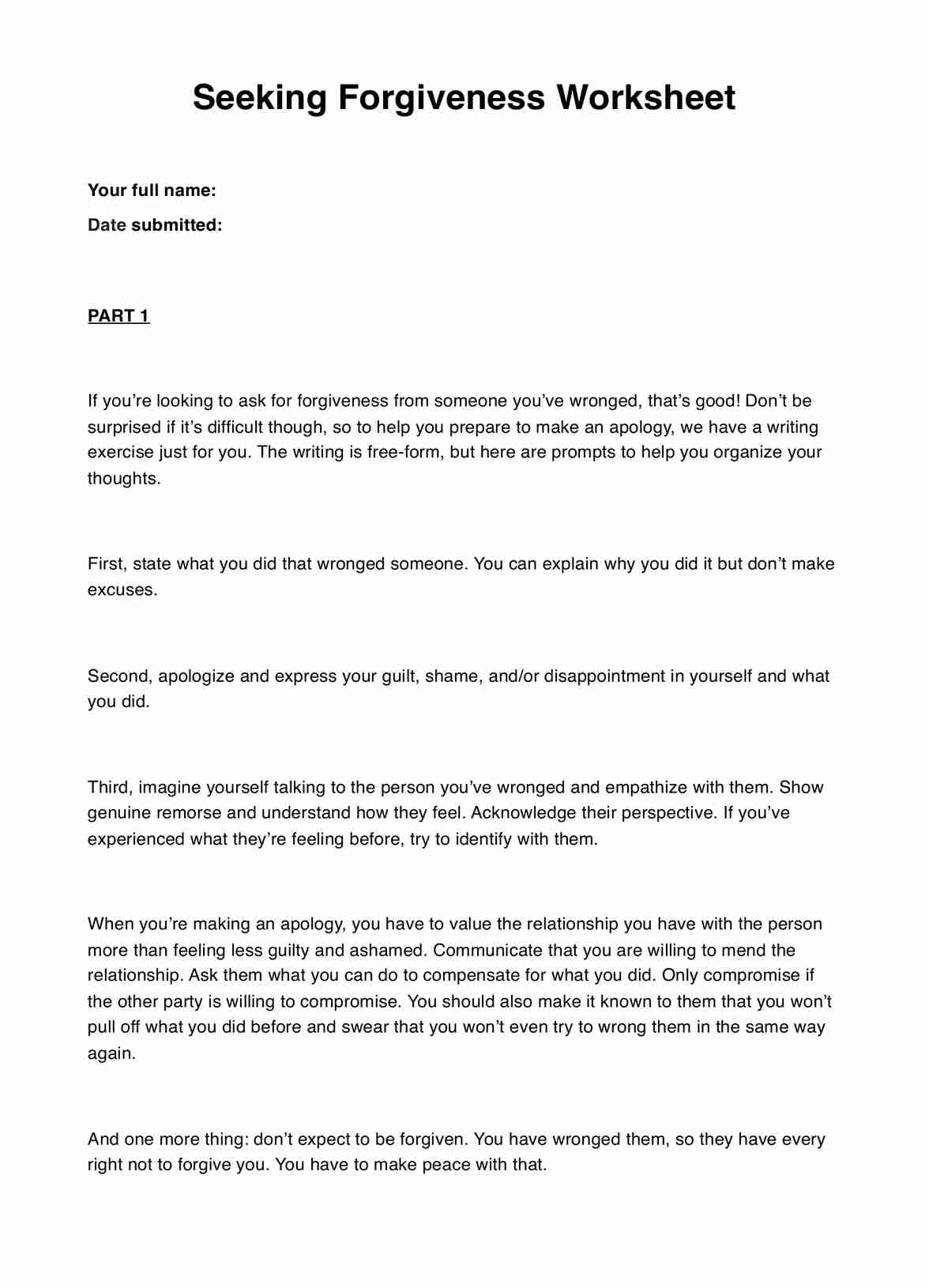There might be some difficulty, given that it asks people to write down what they did that wronged others and how they will apologize for it. It will also ask them to write about what happened after they apologized. This worksheet is for articulating heavy stuff, so don’t be surprised if your patient takes a while before submitting it back to you.

Seeking Forgiveness Worksheet
Help your patient work through their feelings of guilt, shame, and resentment by issuing the Seeking Forgiveness Worksheet! Learn more about it through this guide.
Seeking Forgiveness Worksheet Template
Commonly asked questions
The patient will engage with this worksheet twice, once before apologizing to the person or people they’ve wronged and again after they’ve apologized. There’s no time limit, though. If this is being worked on during a therapy program, maybe it’s best to agree on when you should expect a fully-accomplish copy.
Yes. If you believe that this worksheet can help you find the courage to apologize to the people you’ve wronged, then go ahead and use it. It’s free! Though, please don’t substitute this for therapy. If your guilt and shame have been too much for you to handle and your mental well-being has declined, please see a professional to have an expert help you work through these feelings.
EHR and practice management software
Get started for free
*No credit card required
Free
$0/usd
Unlimited clients
Telehealth
1GB of storage
Client portal text
Automated billing and online payments











